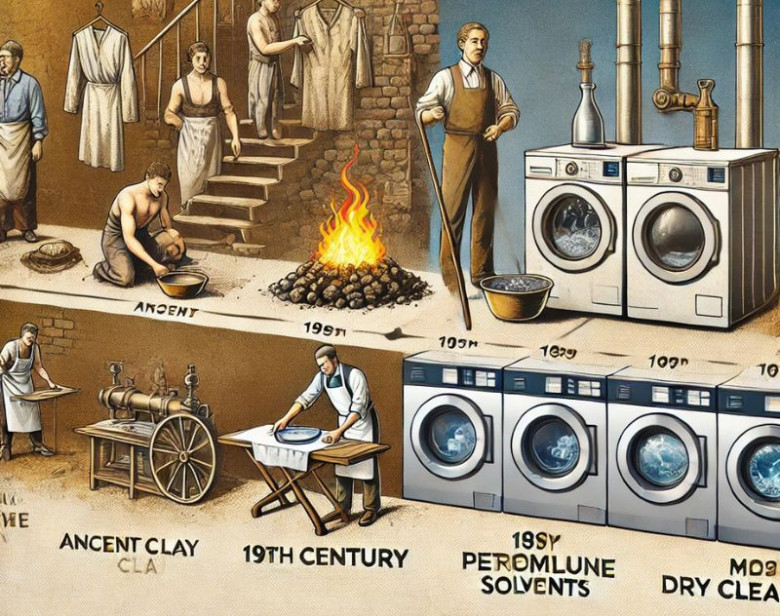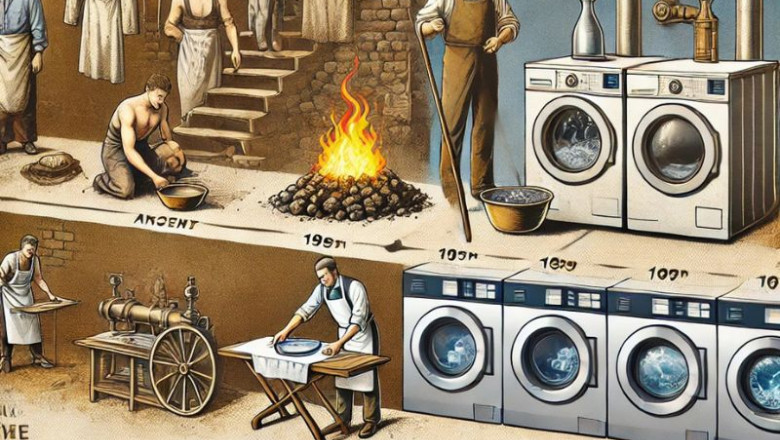views
Dry cleaning is something most of us take for granted today. We drop off our clothes at a local cleaner, pick them up fresh and wrinkle-free, and move on with our day. But have you ever wondered about the history of dry cleaning? Where did it all start? Who came up with the idea to clean clothes without water? This fascinating industry has evolved significantly over centuries, blending chemistry, culture, and technology. Let’s take a deep dive into how dry cleaning came to be and how it’s still evolving today.
The Ancient Origins of Dry Cleaning
The history of dry cleaning dates back to ancient times, long before the invention of modern laundry machines. In ancient Rome, people used a special kind of clay called “fuller’s earth” to absorb grease and dirt from their wool garments. These Roman “fullers,” or professional cleaners, used a mix of alkaline substances and natural ingredients to clean togas without water. Although this wasn’t exactly dry cleaning as we know it today, it laid the foundation for cleaning without soaking clothes in water.
Some ancient texts even suggest that early civilizations in Greece and Egypt had primitive methods of treating delicate clothing using oils and absorbent materials. The desire to keep garments clean and undamaged is nothing new.
Industrial Revolution and the Birth of Modern Dry Cleaning
The real turning point in the history of dry cleaning came in the 19th century. According to one popular story, a Frenchman named Jean Baptiste Jolly noticed that a tablecloth became cleaner when his maid accidentally spilled kerosene on it. Jolly then experimented with cleaning clothes using kerosene and other petroleum-based solvents. In 1855, he opened the first commercial dry cleaning service in Paris, officially launching the modern era of dry cleaning.
Around the same time, in the United States and other parts of Europe, other inventors and entrepreneurs began using similar methods. These early dry cleaners used flammable solvents like gasoline, benzene, and turpentine, which were effective but also highly dangerous. As you can imagine, fire hazards were a major concern during this period.
Technological Advancements in the 20th Century
As dry cleaning gained popularity, so did the need for safer and more efficient methods. By the 1930s, perchloroethylene—or “perc”—was introduced. This non-flammable solvent quickly became the industry standard due to its effectiveness and safety. Perc could dissolve oils, greases, and waxes without harming fabrics, making it a game-changer in the history of dry cleaning.
During the mid-20th century, dry cleaning equipment also evolved. Machines became more advanced, integrating features like distillation systems and improved ventilation. This era marked the birth of the professional dry cleaning service as we know it today.
In places like India, the concept of dry cleaning spread rapidly across urban centers. Today, areas such as Dwarka in New Delhi have a wide array of professional cleaning services. For example, dry cleaners in Dwarka Sector 12 offer modern, chemical-based cleaning for everything from business suits to designer lehengas.
Environmental Awareness and Industry Shifts
While perchloroethylene was a major innovation, it didn’t come without issues. Over the years, environmental and health concerns about perc began to surface. It was found to be toxic to humans and harmful to the environment if not disposed of properly.
This led to a significant shift in the industry during the late 20th and early 21st centuries. New solvents such as hydrocarbon-based cleaners, liquid silicone, and even CO2-based methods were developed as safer, more eco-friendly alternatives.
This transition marks a critical chapter in the history of dry cleaning. Today’s consumers are more environmentally conscious, prompting many dry cleaners in Dwarka Sector 12 and elsewhere to adopt greener practices and chemical alternatives. Some have even embraced “wet cleaning”—a method that uses water and biodegradable detergents to gently clean delicate fabrics.
The Role of Technology in Today’s Dry Cleaning
Modern dry cleaning is not just about chemicals and solvents anymore. Technology now plays a big role. Many dry cleaners use computer-controlled machines, barcoding systems for tracking clothes, and even mobile apps for pickup and delivery. These innovations are making the industry more efficient and customer-friendly.
Moreover, advancements in textile care science have improved how garments are handled. Fabrics are tested for colorfastness, garments are examined for stains, and treatments are tailored accordingly. Some dry cleaners in Dwarka Sector 12 are already using these new tools to ensure top-tier service and garment care.
Cultural and Social Significance of Dry Cleaning
It’s interesting to note that the history of dry cleaning is also tied to social and cultural trends. For example, in the early 20th century, dry cleaning became a sign of affluence in many societies. Having freshly pressed suits or elegant evening gowns was not only about cleanliness—it was about status.
In India, dry cleaning services became essential during wedding seasons, religious festivals, and formal occasions. Lehengas, sarees, and sherwanis often require specialized care, and that’s where trusted services like dry cleaners in Dwarka Sector 12 come in.
The Future of Dry Cleaning
As we look ahead, the dry cleaning industry is set to evolve even more. The focus is shifting toward sustainability, automation, and customization. New machines are becoming more energy-efficient, and AI-driven systems can help detect fabric types and choose optimal cleaning methods. The continued growth of eco-conscious practices will also influence how dry cleaners operate.
In the future, we can expect more biodegradable solvents, reusable packaging, and perhaps even on-demand cleaning robots. These changes will be the next big step in the history of dry cleaning—a story that is far from over.
Why Understanding the History of Dry Cleaning Matters
Knowing the background and evolution of dry cleaning helps us appreciate the service we often take for granted. It also highlights the innovation and adaptation that have kept this industry alive for centuries. From ancient Roman clay treatments to high-tech eco-solvents, the journey of dry cleaning reflects both human creativity and changing consumer values.
So the next time you drop off your clothes at one of the dry cleaners in Dwarka Sector 12, remember that you're engaging with a service that’s been shaped by centuries of progress, science, and culture.
Final Thoughts
The history of dry cleaning is much richer and longer than most people realize. It has its roots in ancient civilizations, was revolutionized during the Industrial Age, and continues to evolve in response to environmental needs and technological advancements. Whether you’re relying on a local expert or just curious about how your clothes get their fresh, pressed look, understanding this history gives you a deeper appreciation of the service.
And if you need modern, reliable garment care, trusted dry cleaners in Dwarka Sector 12 stand ready. They combine old-school knowledge with today’s innovations to keep your wardrobe in perfect shape.















Comments
0 comment